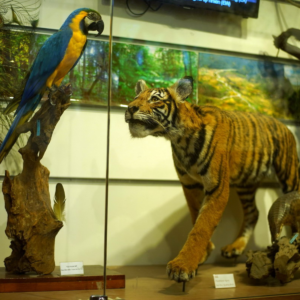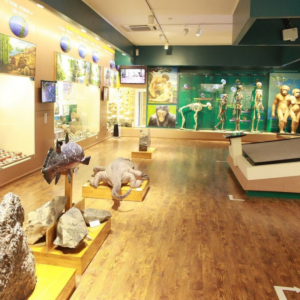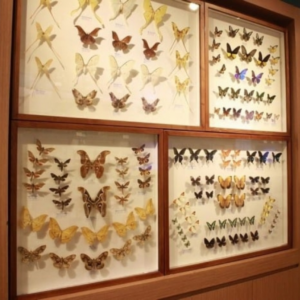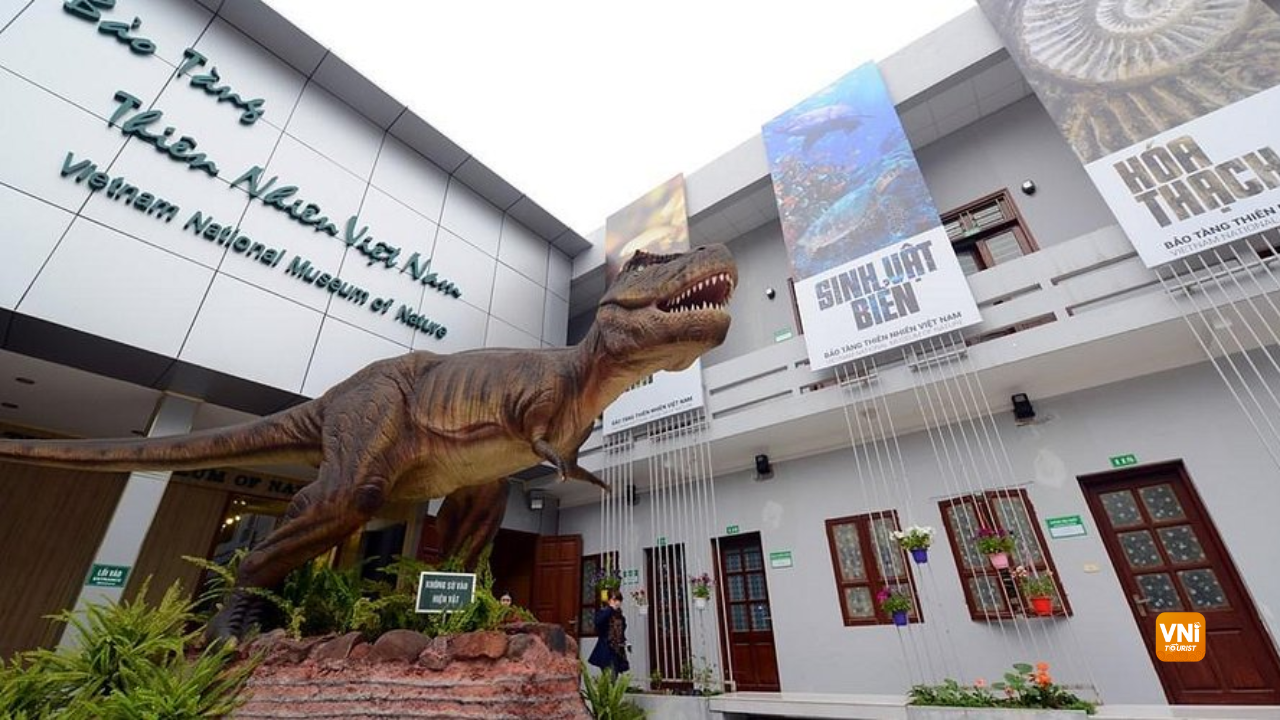Vietnam National Museum of Nature – Exploring Hanoi’s Natural Wonders
Discover Vietnam National Museum of Nature in Hanoi
In the bustling city of Hanoi, there’s a place where ancient fossils meet vibrant wildlife under one roof — Vietnam National Museum of Nature. This tourism site is perfect for children, students, families, and anyone curious about Vietnam’s natural heritage. Ready to dive into millions of years of history, all in one museum?
About Vietnam National Museum of Nature

Vietnam National Museum of Nature is a fascinating tourism site located at 18 Hoang Quoc Viet Street in Hanoi. Established by the Vietnam Academy of Science and Technology, this museum helps visitors discover the natural heritage of Vietnam through exhibits featuring fossils, minerals, wildlife specimens, and interactive displays. It’s not just a place for scientists—families, students, and anyone curious about nature can explore and learn in an enjoyable, friendly environment. From prehistoric dinosaurs to colorful ecosystems, this museum offers a clear and exciting look into Vietnam’s rich natural history, making it a perfect stop on your Hanoi travel journey.
>> Vietnam National Fine Arts Museum
>> Vietnam Museum of Ethnology
Main Exhibition Areas
– Fossils & Prehistoric Life: In this fascinating area, visitors can explore real fossils from animals and plants that lived millions of years ago in Vietnam. You’ll see footprints of dinosaurs, ancient mammoth teeth, and fossilized plants that help tell the story of life long before humans walked the Earth. This section helps everyone understand Vietnam’s ancient past in a simple, exciting way.
– Geology & Mineral Gallery: This gallery introduces visitors to Vietnam’s amazing geological diversity. You’ll find displays of colorful rocks, gemstones, minerals, and volcanic samples collected from mountains, caves, and coastal regions across the country. Each exhibit explains clearly how these unique geological treasures were formed, helping you appreciate the natural forces that shaped Vietnam’s beautiful landscapes.
– Biodiversity & Wildlife: The Biodiversity Gallery is packed with lifelike animal specimens, from mammals, birds, reptiles, to colorful insects native to Vietnam. Here, you’ll discover ecosystems like tropical rainforests, mangrove swamps, and coral reefs displayed through realistic models and photographs. This area highlights the incredible diversity of wildlife and plants found only in Vietnam, teaching visitors why protecting these natural wonders is so important.
– Interactive Zone: Perfect for children and curious learners, the Interactive Zone offers fun and hands-on experiences. Kids can observe tiny insects under microscopes, touch real shells and minerals, and explore interactive screens that explain environmental concepts in an engaging way. Occasionally, this area features special exhibits focusing on themes such as ocean life, endangered species, or conservation efforts. It’s an ideal place for families and young visitors to connect directly with nature through playful learning.
Why Is This Museum Special for Visitors?
– Kid-Friendly Learning: The museum is designed with children in mind. Interactive exhibits, microscopes, and hands-on activities make science exciting and accessible. Kids can learn about nature through fun experiences like touching real fossils, examining insects, and exploring ecosystems through colorful models.
– Rich Scientific Insights: Visitors can discover detailed scientific information presented in a clear and engaging way. From dinosaur fossils and ancient minerals to beautifully preserved wildlife, each exhibit provides valuable knowledge about Vietnam’s biodiversity, ecosystems, and geological history.
– Cultural and Environmental Education: Beyond just displays, the museum teaches visitors about the important relationship between Vietnamese people and their natural environment. Exhibits highlight the significance of preserving ecosystems and protecting wildlife, inspiring visitors to appreciate and care more about nature.
– Peaceful and Enjoyable Escape: Located away from Hanoi’s busy tourist spots, the museum provides a calm, relaxing environment for visitors. Families, students, and individuals looking for a quiet yet engaging place will find this museum an enjoyable escape to explore nature comfortably.
– Unique and Rare Exhibits: The museum showcases specimens and exhibits that you won’t find anywhere else, such as prehistoric animal fossils unique to Vietnam, rare minerals, and endemic wildlife species. This offers visitors a special opportunity to see and learn about Vietnam’s natural heritage up close.

How to Visit: Practical Info
– Location: 18 Hoang Quoc Viet Street, Nghia Do, Cau Giay District, Hanoi, Vietnam.
– Opening Hours
- Tuesday to Sunday: 8:30 AM – 11:30 AM and 1:30 PM – 4:30 PM.
- Monday: Closed
Note: It’s advisable to check the museum’s official website or contact them directly for the most current information, as hours may vary.
– Admission
- Entrance to the museum is typically free of charge.
– Getting There
- By Bus: Several bus routes pass near Hoang Quoc Viet Street.
- By Taxi/Grab: A convenient option from various parts of Hanoi.
– Tips for Visitors
- Best Time to Visit: Weekday mornings are generally less crowded.
- Duration: Allocate about 1 to 2 hours to explore the exhibits.
- Facilities: The museum offers guided tours and educational activities; inquire ahead to enhance your experience.
Tips for a Great Experience
– Visit Early in the Day: Plan to arrive early (around opening time at 8:30 AM) to avoid large crowds. This helps you explore comfortably and enjoy each exhibit without feeling rushed.
– Dress Comfortably: Wear comfortable shoes and clothes because you’ll spend at least an hour or two walking and standing. The museum’s exhibits span different floors, so comfortable footwear is recommended.
– Join a Guided Tour: Ask about guided tours offered by the museum. A guided tour provides deeper insights, stories behind the exhibits, and an enriched learning experience, especially useful for families and students.
– Participate in Interactive Activities: Don’t miss the interactive zones designed for children and curious learners. Engage in hands-on activities such as examining fossils, using microscopes to observe insects, and interacting with touchscreen displays for a fun and educational experience.
– Photography Etiquette: Feel free to take photos, but avoid using flash photography near sensitive exhibits or preserved specimens. Be mindful and respectful of museum guidelines to protect the integrity of the exhibits.
– Bring a Notebook or Sketchpad: Consider bringing along a notebook or sketchpad. Children and students, in particular, might enjoy sketching fossils or animals they see or jotting down interesting facts learned during the visit.
– Combine with Nearby Attractions: Enhance your day by combining your museum visit with other nearby attractions like the Vietnam Museum of Ethnology (just a short walk away) or relaxing at the nearby Nghia Do Park. This provides a complete day of diverse experiences in Hanoi.
– Check for Special Exhibits or Events: Before your visit, check the museum’s official website or social media pages for announcements about special temporary exhibitions, educational workshops, or events happening during your visit to enjoy additional unique experiences.

Conclusion
Visiting Vietnam National Museum of Nature is like stepping into a fascinating adventure through Vietnam’s vibrant natural history. From incredible dinosaur fossils and sparkling minerals to the diverse wildlife on display, every corner of this tourism site in Hanoi offers something new to discover. It’s educational, fun, and perfect for visitors of all ages, especially families looking to learn and explore together.
Curious about the wonders of nature? Don’t miss out on the Vietnam National Museum of Nature during your next trip to Hanoi. Come explore, learn, and get inspired by Vietnam’s rich biodiversity. Let VNITourist be your guide for even more exciting adventures and hidden gems in Hanoi!

